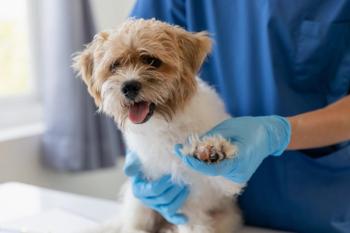
Top pet toxins list includes grapes, raisins; joint supplement overdoses also a concern
Pet Poison Helpline tallies substances that prompted the most calls for help last year.
The veterinarians and toxicology experts at Pet Poison Helpline have released their top 10 list of household items that generated the most poison consultations for dogs and cats in 2013. The items below are presented in order of frequency, with number one being the item that caused the most emergency calls to Pet Poison Helpline.
The content for this year’s feline top 10 list did not change from last year, Associate Director Ahna Brutlag, DVM, MS, DABT, DABVT, tells dvm360. However, this is the first year canine joint supplements have cracked the list for dogs. “While, mostly, these have limited toxicity, rare reports of liver failure have occurred with massive overdose,” Brutlag says. “Many vets are not aware of this.” Grapes and raisins also won their own place on the canine top 10 list, which Brutlag attributes to increased awareness among pet owners. Here are the top pet toxins of 2013:
Top 10 toxins for dogs
1)
2)
3)
4)
5)
6)
7) Insect bait stations: These rarely cause poisoning in dogs—the bigger risk is bowel obstruction when dogs swallow the plastic casing.
8)
9) Glucosamine joint supplements: Overdoses of these sometimes tasty products typically only cause diarrhea; however, in rare cases, liver failure can develop.
10) Oxygen absorbers and silica gel packets: Iron-containing oxygen absorbers found in food packages like beef jerky or pet treats can cause iron poisoning. Silica gel packs, found in new shoes, purses or backpacks, is rarely a concern.
Top 10 toxins for cats
1)
2)
3)
4)
5)
6)
7)
8)
9) Household insecticides: Most of these household sprays and powders are fairly safe, but it’s best to keep cats away from plants after application until the products have dried or settled.
10)
Newsletter
From exam room tips to practice management insights, get trusted veterinary news delivered straight to your inbox—subscribe to dvm360.






